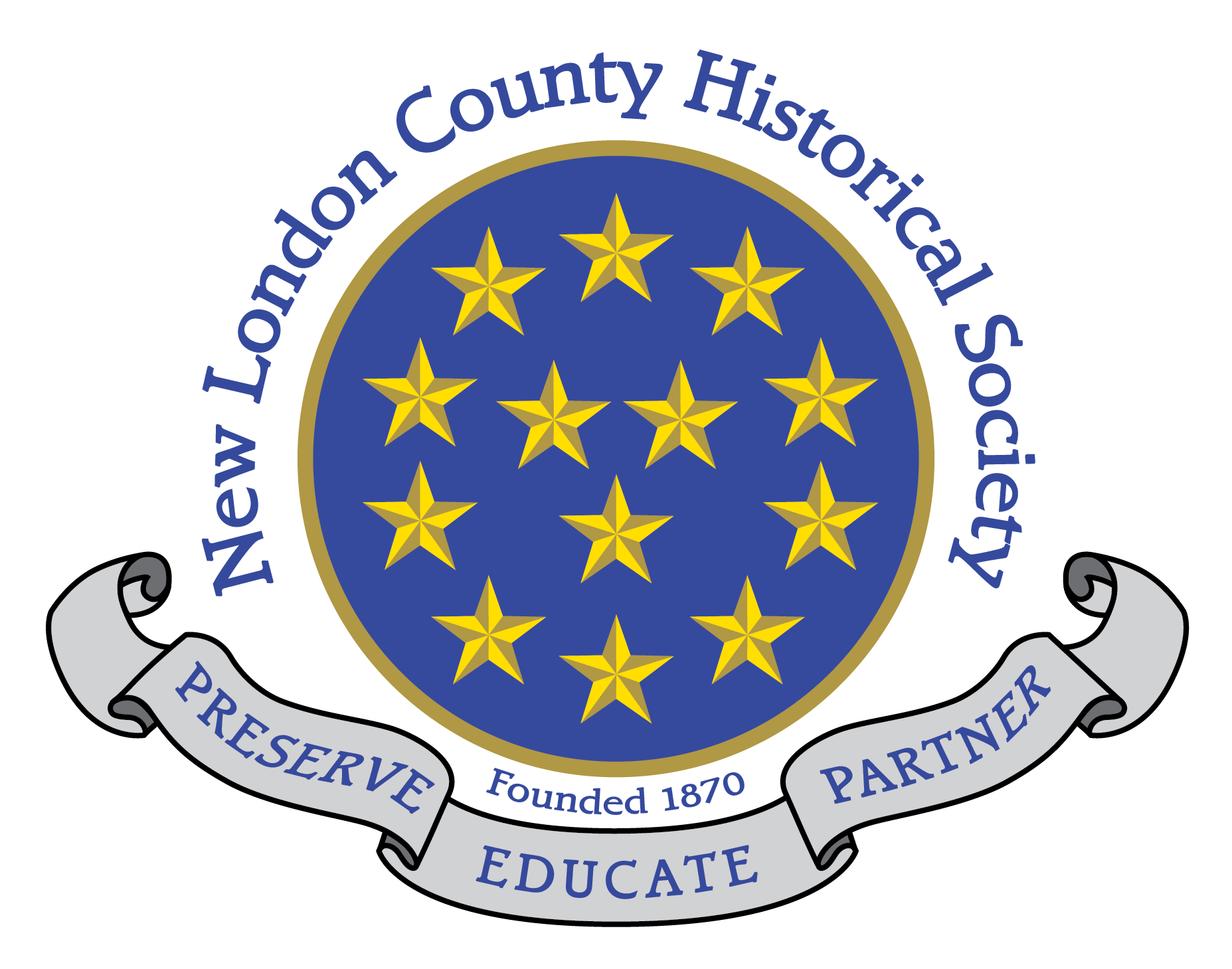
Sometimes it just takes new eyes to help you “discover” treasure. We’ve written in the past about the 13-star flag in our collection that was restored, reframed and hung for the exhibit that marked the 225th anniversary of the Burning of New London. Late in the summer 2007, a new member, Gary Gianotti, visited the Shaw Mansion to do some research on Norwalk privateers. Seeing the flag and hearing of its history he was very impressed because he was aware of just how rare that flag might be. In the following weeks he contacted national-level flag experts and became even more excited.
When the historical society purchased the Shaw Mansion to be its headquarters in 1907, the 13-star flag was discovered in the attic of the house. Jane Perkins, who sold the house to us, was the great-great granddaughter of the original builder, Capt. Nathaniel Shaw. Miss Perkins told Mrs. Dudley Bramble, Regent of the Lucretia Shaw Chapter of the DAR, that the flag belonged to the Naval Agent, Nathaniel Shaw (Jane’s great-great uncle), and Mrs. Bramble documented the conversation.
The flag was on exhibit for a long time on the landing to the second floor, framed and sandwiched between two panes of glass. At one point a visiting scholar, Dr. Henry Moeller, who was a vexillologist (a flag expert), urged the society to remove the flag from this poor environment and restore it before it was too late. In one letter he noted that our stewardship of this item was … well, not stewardship.
The flag was eventually taken to the textile lab of the University of Rhode Island. When they removed the flag from the glass, pigment from the flag could be seen remaining on the glass. Repairs were made, and it was stitched between two layers of a scrim-like mesh which was mounted between two layers of archival matt board. It was framed with archival quality materials and installed as part of the exhibit last September.
The flag is hand-stitched and apparently made of silk ribbons sewn together for the stripes. The stars on the field of blue (the canton) are in a very unusual pattern, a circle of ten with three in the middle. The claim has always been that this is a handmade American flag from the late 18th century – from the office of a person who would be very likely to have such a banner, bearing in mind that the purpose of the flag was to identify American ships.
Gary provided a link to a web page from one of the leading experts, Jeff Bridgeman, who wrote:
“Kentucky became the fifteenth state in 1792 and our flag was officially changed from 13 to 15 stars in 1795. It then remained official until 1818. This is a rather long period for an official flag of these United States, but there are only three, period, 15-star, Stars & Stripes flags known! That’s hard to believe but true all the same. Most of us are quite familiar with at least one of the three. This is the Star Spangled Banner, which is housed at the Smithsonian. Made by Mary Pickersgill in 1813, the Star Spangled Banner, one of the earliest and most loved examples, is plainly not an 18th century flag. Even the Smithsonian does not own a period 13 star flag. And it is this mystifying statement that I always feel puts things in a very clear light with regard to the rarity of these very important, historic objects of our nation’s heritage.
“So few Stars and Stripes from colonial times exist that three or fewer examples are thought to be in private hands. Including those represented in museums, I believe that the total dating to the period when we had 13 states is probably nearer to zero than it is to twenty. No qualified person has ever traveled the world to inspect every one of them with a claim to be period, prove that each one dates to the 18th century, and arrive at a total.”
So why haven’t we taken our flag to the Smithsonian to be authenticated? Well, the Smithsonian, can’t really do that. They can examine the stitching, take samples of the material and perhaps rule out an 18th-century existence – for example they could identify a dye in the fabric which wasn’t available at the time. However, even if the materials proved to be authentic to the 18th century by scientific examination, it is the provenance of an object such as this, that is, the physical history of where the object came from, which can best provide authentification. The provenance of this flag is impeccable; however, we will admit that it is not unassailable.
Visiting vexillologists have vetted our flag and agree that we have every reason to believe this is the real deal — exactly what it appears to be, one of the rare examples of an American flag that can be documented back to the American Revolution. Noticing the Shaw Family coat of arms has three five-pointed stars across the center of a shield, they suggested that the arrangement of three stars surrounded by a circle of ten stars may have been an attempt to personalize the flag. You’ll have to come see for yourself.
